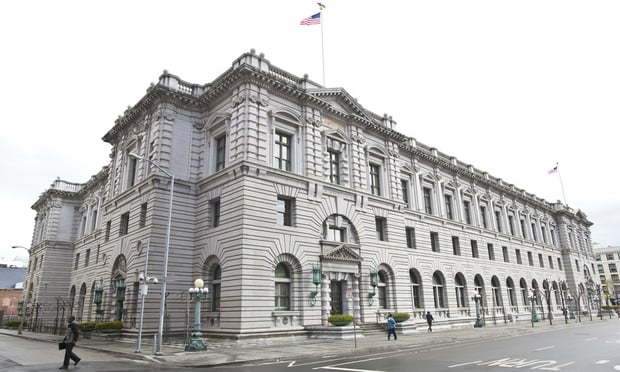Features

Exploring Gen AI’s Impact on Intellectual Property
For some, GenAI is the latest and greatest innovation, while for others, it is an existential threat. In this emerging technological landscape, there are many implications and unanswered questions regarding the protection of intellectual property rights. This article highlights some of the challenges GenAI presents, and recent developments in copyright law and trademark law in this quickly evolving space.
Features

Investigating Potential Misconduct Can Reduce Compliance Risks With DOJ Uncertainty
Although it remains to be seen to what extent the DOJ’s robust and aggressive approach to corporate enforcement will change in the forthcoming administration, companies should continue to take compliance seriously and make the necessary investments to prevent, detect and remediate misconduct.
Features

Construing Separate Contractual Instruments As One
At times, disputes arise among parties in commercial transactions as to whether multiple contracts involving a common matter should be read as a single, integrated contract, or as separate and distinct agreements. This issue often surfaces where one or more such agreements contain arbitration clauses, but other related contracts do not.
Columns & Departments

Fresh Filings
Notable recent court filings in entertainment law.
Features

Ninth Circuit: Fully Secured, Nonrecourse Creditors Qualify As ‘Countable’ Creditors
Addressing a matter of first impression, the bankruptcy appellate panel for the U.S. Court of Appeals for the Ninth Circuit recently held that fully secured, nonrecourse creditors qualify as “countable” creditors for purposes of determining the viability of an involuntary bankruptcy petition under Section 303(b) of the U.S. Bankruptcy Code.
Features

TikTok’s ‘Blackout Challenge’ and Section 230 Immunity
In Anderson v. TikTok, Inc., the Third Circuit held that the liability of an Internet Service Provider such as TikTok depended on whether TikTok was sharing content via the platform’s algorithm or engaged in something more. The question of whether TikTok’s recommendation algorithm transformed content into TikTok’s own expressive activity was not immunized by Section 230 and has disrupted the protection previously enjoyed by Internet platforms like TikTok.
Features

Will Law Firms Invest In AI In 2025?
Positive 2024 financials in Big Law will likely lead to more cash flow that should be available for law firm innovation, industry analysts say. In particular, law firm leaders are looking to 2025 to further leverage generative artificial intelligence to transform their business.
Features

Protecting High-Profile Clients from Online Smear Campaigns
High-profile individuals facing litigation often face a dual battle: in the courtroom and the court of public opinion. The rapid pace of digital information sharing magnifies reputational threats, including smear campaigns, privacy violations, and cyberattacks, requiring swift and strategic intervention to protect personal and professional standing.
Features

Navigating AI Risks: Best Practices for Compliance
Businesses are working to navigate AI responsibly, driven by legal compliance and concerns over potential misuse. Mismanaged AI could jeopardize critical systems and erode customer trust, underscoring the need for thoughtful implementation and oversight.
Features

AI and the Billable Hour
While there has been a slow pivot toward alternative fee arrangements in the last decade, many firms still cling to the tenet of the billable hour, even as artificial intelligence reimagines its contours.
Need Help?
- Prefer an IP authenticated environment? Request a transition or call 800-756-8993.
- Need other assistance? email Customer Service or call 1-877-256-2472.
MOST POPULAR STORIES
- The 'Sophisticated Insured' DefenseA majority of courts consider the <i>contra proferentem</i> doctrine to be a pillar of insurance law. The doctrine requires ambiguous terms in an insurance policy to be construed against the insurer and in favor of coverage for the insured. A prominent rationale behind the doctrine is that insurance policies are usually standard-form contracts drafted entirely by insurers.Read More ›
- A Lawyer's System for Active ReadingActive reading comprises many daily tasks lawyers engage in, including highlighting, annotating, note taking, comparing and searching texts. It demands more than flipping or turning pages.Read More ›
- The Brave New World of Cybersecurity Due Diligence in Mergers and Acquisitions: Pitfalls and OpportunitiesLike poorly-behaved school children, new technologies and intellectual property (IP) are increasingly disrupting the M&A establishment. Cybersecurity has become the latest disruptive newcomer to the M&A party.Read More ›
- Abandoned and Unused Cables: A Hidden Liability Under the 2002 National Electric CodeIn an effort to minimize the release of toxic gasses from cables in the event of fire, the 2002 version of the National Electric Code ("NEC"), promulgated by the National Fire Protection Association, sets forth new guidelines requiring that abandoned cables must be removed from buildings unless they are located in metal raceways or tagged "For Future Use." While the NEC is not, in itself, binding law, most jurisdictions in the United States adopt the NEC by reference in their state or local building and fire codes. Thus, noncompliance with the recent NEC guidelines will likely mean that a building is in violation of a building or fire code. If so, the building owner may also be in breach of agreements with tenants and lenders and may be jeopardizing its fire insurance coverage. Even in jurisdictions where the 2002 NEC has not been adopted, it may be argued that the guidelines represent the standard of reasonable care and could result in tort liability for the landlord if toxic gasses from abandoned cables are emitted in a fire. With these potential liabilities in mind, this article discusses: 1) how to address the abandoned wires and cables currently located within the risers, ceilings and other areas of properties, and 2) additional considerations in the placement and removal of telecommunications cables going forward.Read More ›
- Guidance on Distributions As 'Disbursements' and U.S. Trustee FeesIn a recent case from the Bankruptcy Court for the District of Delaware, In re Paragon Offshore PLC, the bankruptcy court provided guidance on whether a post-plan effective date litigation trust's distributions constituted disbursements subject to the U.S. Trustee fee "tax."Read More ›
